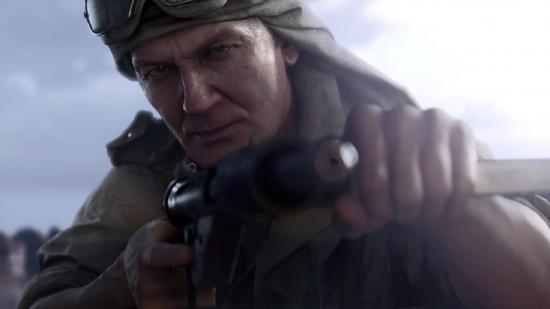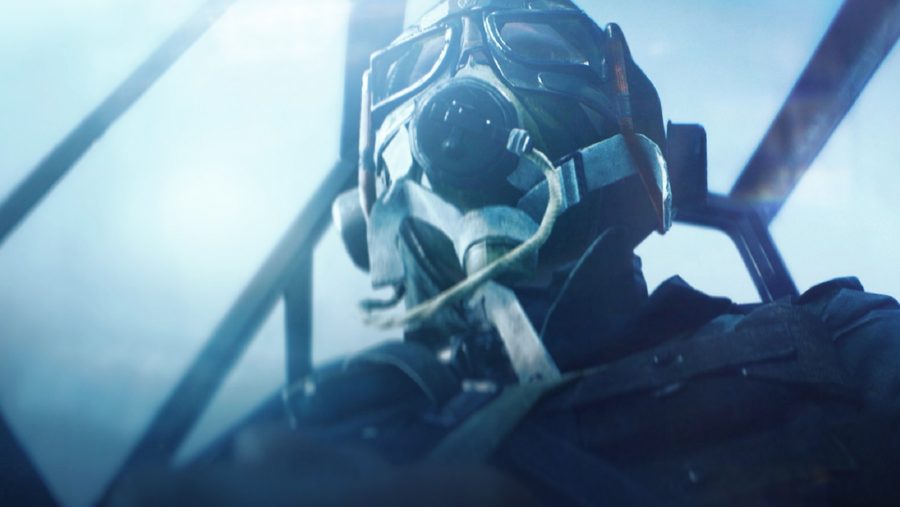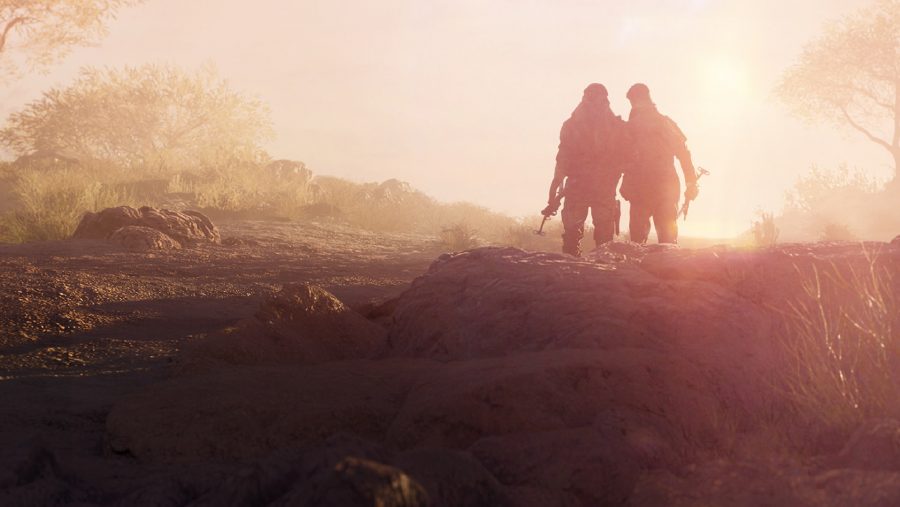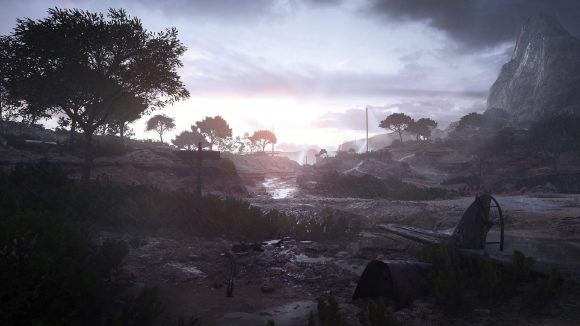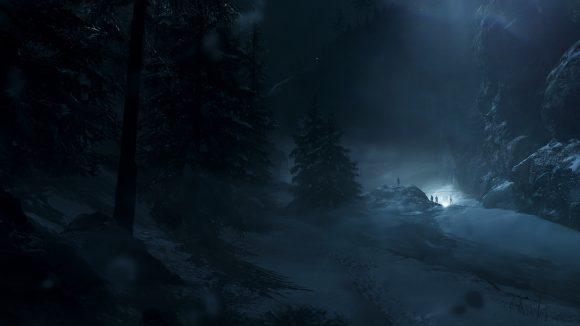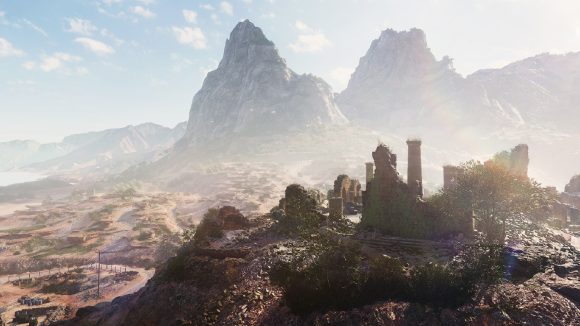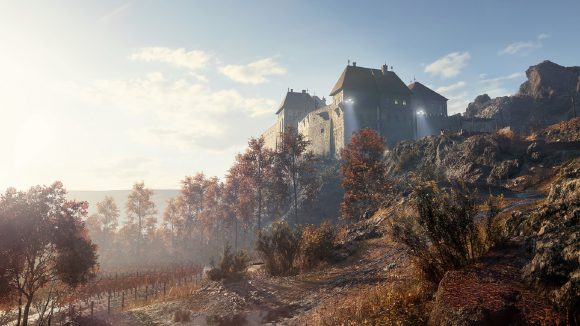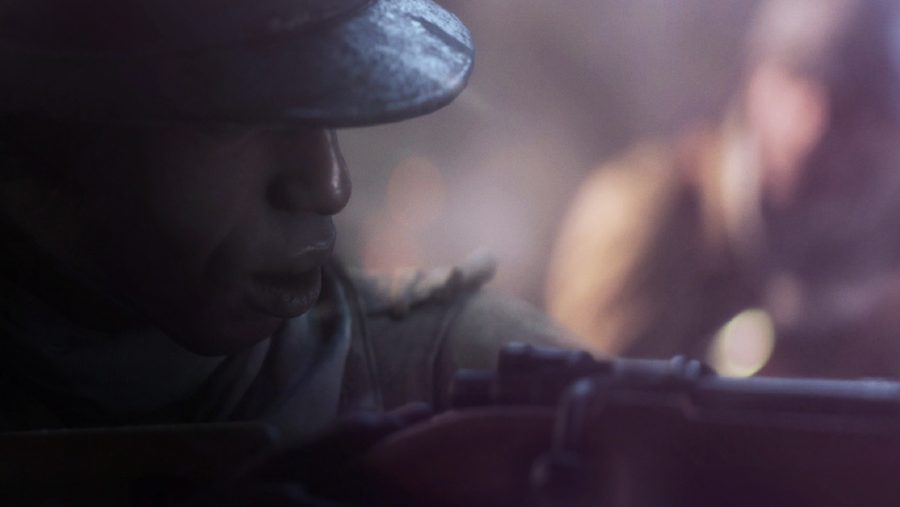Today, military shooters are largely about their online multiplayer. It’s why single-player campaigns in FPS titles have, in recent times, felt like cursory add-ons – short in length and familiar in structure. Instead, competitive gaming is what a huge section of the audience comes for now – as such, it’s where the money can be found.
Two years ago, keen to assert that Battlefield isn’t just for the online crowd, EA DICE debuted the ‘War Stories’ format. Making up the single-player campaign of Battlefield 1, the War Stories were effectively distinct, brief tales about the people and places of WWI. Short stories told as FPS stages, in other words.
Now, with Battlefield V nearing launch, DICE has returned to the War Stories approach again. This time, however, it comes with the promise to take us to more distinct and varied places, both narratively and tonally. To find out more, wee spoke to DICE’s Daniel Berlin, franchise design director on Battlefield V, to find out exactly what this generation of War Stories the studio hopes will deliver.
PCGamesN: How does Battlefield V’s War Stories make it different to more typical single-player FPS campaigns?
Daniel Berlin: It’s about gameplay diversity. Gameplay diversity comes about through a necessity for Battlefield, in a way. The wider game has so many different aspects to it. It has the flying, it has the tanks, it has, of course, infantry; it has everything. So we needed to create a format in War Stories that makes sense and lets a player do all those things.
It would make significantly less sense if we had one hero who was a tank driver, a pilot, and everything else, who also existed in all these different locations. That wouldn’t make any sense. So the War Stories format and mentality came out of the need for us to showcase a broad, wide, diverse game. How do we showcase all that in a way that makes sense?
You mentioned breadth there. You’ve promised to let players tackle War Stories missions how they want. How do you find a balance between a purely linear experience and an open-world game?
Firstly, finding that balance [between linearity and open-world structuring] just comes down to a lot of testing. In my career, I’ve made straightforward linear games, and I can say speaking from my own experience that, as soon as you open up that open-world can of worms, it can get so much more difficult to make sure the player is engaged, and that they’re having a good time. Because if you let the player do as they wish, they might say ‘do you know what? Fuck it. I’m just going to go over there and look at rocks’.
Which wouldn’t be the experience you’re trying to deliver? In relinquishing linearity you can lose control over ‘directing’ the experience the player has?
Exactly.
But the War Stories aren’t truly linear. There’s a lot of ways to get from point A to point B, and achieve a goal.
We talked a lot about how to approach this in Battlefield V’s War Stories. It comes down to a fundamental belief we have at DICE that players can handle more. We believe that players can handle these systems, and can handle authoring their own experiences, rather than us just scripting a set experience. It does also come down to trial and error sometimes when designing the game. Some things do work when very open, and other things not so much.
Within the Nordlys story, with the very first encounter you come across you can choose to play stealthy and sneak in the base undetected. Or you can drive a car and go full on, and drive over six people, and go crazy. It’s up to you in those cases. But that’s not always the case in the War Stories.
We have what you could call ‘open-ended bubbles’, where you can go about playing how you want to, and then for other more story-focused bits where we reel the breadth in and give you something more precisely delivered – those narrative moments.
So the game’s openness is flexible in the War Stories?
That’s right. Linearity exists in the game for certain beats and certain moments we want to deliver, but then it can open right up again. And then close, and open up again, and close, and so on.
There are other types of diversity of player experience, of course. How varied is the emotional experience of the War Stories?
There is emotional diversity, and that comes from that aspect where – just like where we have gameplay diversity – we want to have diversity in terms of the emotion we want you to feel as a player. Sometimes we want to pull at your heartstrings, and sometimes we’re actually going to make you laugh. Hopefully, at least – humour is very subjective.
And humour has a role in dark places and times, like war. Is that what you were pursuing with humour in a war game?
Yes. That’s what we wanted to give [players]. You shouldn’t be playing through the War Stories on an emotional flatline, where it feels the same way all the way through. You should be laughing at times and there’s times you should feel ‘oh my god, this is so heavy. These atrocities are a tragedy’. We want you to go on a rollercoaster up and down. And you see all this through the different War Stories.
The Under No Flag story is like that. It’s kind of more lighthearted. While if you go and look at the Tirailleur one, it’s much more of a tragic tale. There you come into the heavier elements of War Stories in that sense.
You’ve previously mentioned spotlighting lesser-known stories from real warfare. How did you come to that approach?
As I mentioned before, in a way that comes – at its core – from that necessity around how many ways Battlefield V is played. But as for the way we landed on these particular stories we have chosen for our War Stories? That’s more of us wanting to show the unseen and the ‘unplayed’. We’re not interested in retelling stories you’ve already heard, and we want to show the diversity [of World War II]. It is a global conflict and everyone was involved in it. It touched everybody.
It wasn’t interesting to us to tell stories that have already been told. So we started to dig and find these different aspects of the war that haven’t necessarily been told. And if they have been told, they most definitely haven’t been played. It comes from that mantra we had of ‘the unseen and the unplayed’, which goes through the entire product. It’s also in the weapons you use, or the time you get in a tank and go ‘what the fuck is this thing? It’s weird, and I haven’t seen it before’. It goes from the materials that you use to the stories that you take in.
Are we talking fictional stories based on historically realistic foundations?
Yes. It’s heavily inspired by real events, but it’s not one-to-one historical accuracy. We’re not saying a particular person was in a particular place on a certain day. It’s not like that. It’s fictional stories set under an historical lens.
What you’re doing with War Stories will certainly appeal to fans of military history. But how will you satisfy the audience that are just interested in shooting?
Our approach is that you have the War Stories, and they – because they’re tied to a heavy narrative – have much more anchoring in history and emotion than the multiplayer side of things. That [multiplayer] leans heavily into the sandbox nature of Battlefield and the gameplay nature of Battlefield. Of course, the locations you’re at are still real locations, but it’s a multiplayer setting, and there’s 64 players going at each other.
We can only do so much to control what players do in that setting. So we said to ourselves this time around that there’s the multiplayer, and that is more of a sandbox experience; a multiplayer experience in a competitive space. Whereas the War Stories are where we’re leaning into the historical nature, to a large extent.
You’re pushing PC hardware with Battlefield V and embracing new developments in ray tracing via Nvidia’s RTX. What difference does that make to the actual gameplay, and the stories you tell?
A lot of the RTX stuff is brilliant. The way you can have these specific gameplay moments you’ve never had before, like spotting somebody come around a corner in the reflection of a car and taking them out; that stuff is super cool. And I think that, across the board as we push technology, there’s a lot of advancements in other areas too, and particularly for storytelling. Facial animation has come a long way, and that type of portrayal where you’re actually seeing emotions in someone’s face; that’s something we really lean into with War Stories.
But, as a counter-point, perhaps a good story can be told with just stick figures. Does technology really matter that much?
You could tell a story with stick figures. Probably. I think you could anyway. But in the medium of games we deliver the best experience if all departments work together to a single goal, I think that’s when you really drive it home. That gives you the level of detail. And the detail of the gameplay really does help tell the War Stories.
Meaning technology can be important in helping you set the tone, atmosphere, and so on?
With the Tirailleur story, you’ll notice there’s one section where, when you’re cresting over a knoll, you just see this vast, almost daunting line of fortifications stretching all across the horizon. It’s a big moment, a detailed moment and – I hope – an emotional moment. And that’s a technological marvel in a sense. In order to do that – and in order to portray the feeling you have in being sent on an impossible mission while being underpowered versus an overpowering force – being able to portray that moment visually, and the feeling you get at that moment, is in part to do with what technology allows us to do.
There are so many different ways to deliver on this in games, generally. If you take a game like Journey, which isn’t photorealistic in any sense, it still pulls at your heart a lot. I think it’s about being deliberate in what you’re trying to make, and the emotions you’re trying to evoke.
And it’s important [as a developer] to talk about emotions from the get-go. That’s one of the processes we go through. From the very early stages of making the War Stories we’re talking about what the emotions are we want the player to feel. Emotions are kind of the first things we scribble down. And then from those emotions we then drive the gameplay. That’s how Battlefield V’s making starts.
